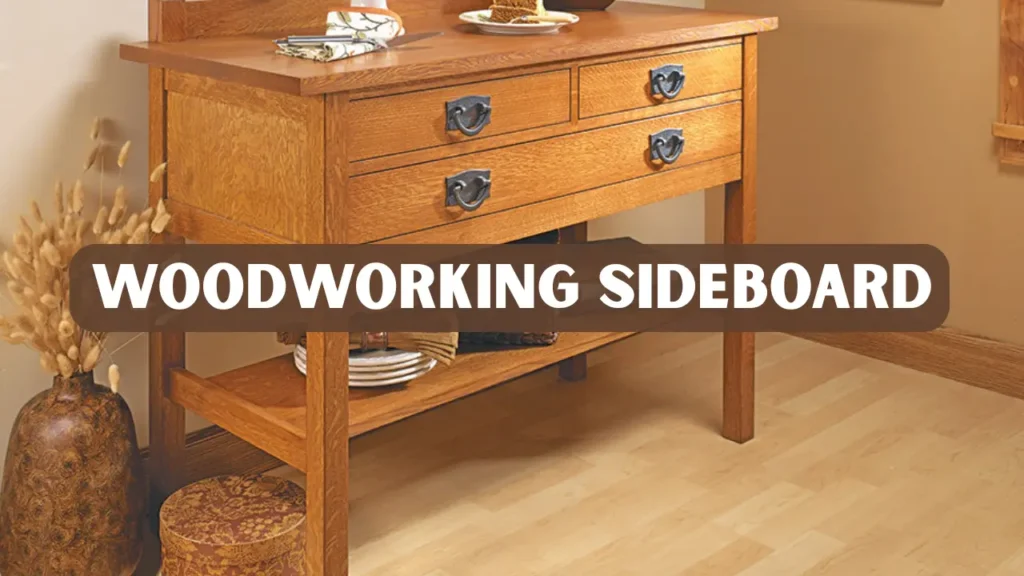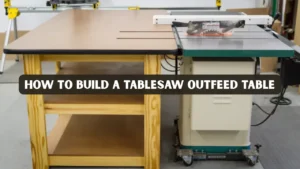Key Takeaways:
- Learn how to build a durable and stylish woodworking sideboard from start to finish
- Understand the materials, tools, and design considerations required for a successful project
- Gain practical insights through a detailed real-world case study
- Learn essential tips and tricks to enhance quality, avoid common mistakes, and achieve a professional finish
- Explore frequently asked questions to guide beginners and intermediate woodworkers
Introduction to Woodworking Sideboard
A woodworking sideboard is a versatile piece of furniture that combines functionality with aesthetic appeal. Traditionally used in dining rooms to store tableware and serve meals, sideboards have become essential furniture pieces in modern homes. They can also serve as storage in living rooms, hallways, or offices. Crafting your own sideboard allows you to personalize the design, size, and finish so it perfectly complements your home decor.
Building a sideboard is an excellent project for woodworkers at all levels. It incorporates various woodworking techniques, from precise joinery to professional finishing. Following a step-by-step guide ensures even beginners can achieve a durable, attractive result. This guide provides detailed instructions, expert tips, and a case study to give you practical insights and inspiration.
Materials and Tools Required
Before starting, gather high-quality materials and essential tools. Quality materials will ensure a durable and professional-looking sideboard.
Materials:
- Use hardwood such as oak, maple, or walnut for the main structure. These woods are strong and long-lasting.
- Plywood works well for hidden components like drawer boxes. It is cost-effective and stable.
- Use wood glue and screws for assembly. They provide strong and secure joints.
- Install drawer slides and cabinet hinges. These allow smooth operation of drawers and doors.
- Use sandpaper in coarse, medium, and fine grit. Sanding ensures smooth surfaces and edges.
- Apply wood filler to smooth imperfections. It helps achieve a flawless finish before painting or staining.
Tools:
- Use a table saw or circular saw for precise cutting. These tools help achieve accurate dimensions.
- Use a drill with various drill bits. It allows you to create holes for screws and hardware.
- Clamps hold panels together during assembly. They ensure strong and stable joints while glue dries.
- Use a measuring tape and carpenter’s square for accuracy. Proper measurement keeps your project aligned.
- Use a sanding block or electric sander to smooth surfaces. Sanding prepares the wood for a clean finish.
- Use paintbrushes, foam applicators, or sprayers for finishing. They help apply stain, paint, or varnish evenly.
Step by Step Guide
Step 1: Planning and Designing Your Sideboard
Proper planning ensures your woodworking sideboard fits perfectly in your space and meets storage needs.
Steps to Plan Your Design:
- Determine Dimensions: Measure the available space for height, width, and depth. Typical dimensions are 30–36 inches in height, 50–72 inches in length, and 16–20 inches in depth.
- Sketch Your Design: Include the number of drawers, doors, and shelves in your plan. Ensure balanced proportions for both aesthetics and functionality.
- Choose Wood Type: Select a wood type based on durability, grain, and overall appearance. Hardwood is ideal for longevity, while softwood is easier to work with for beginners.
- Plan Joinery Techniques: Decide between dowels, mortise-and-tenon, or pocket screws. Strong joinery ensures a stable, long-lasting sideboard.
Using software or simple drawing tools can help you visualize your project before cutting any wood. Planning reduces errors and ensures a smoother building process.
Step 2: Preparing the Wood Panels
Accurate preparation is crucial for assembly and overall quality.
- Cut Panels: Cut all pieces, including top, sides, bottom, shelves, and drawer boxes.
- Sand Edges: Smooth edges to remove splinters and ensure seamless joints.
- Pre-drill Holes: Mark and drill holes for screws and hinges to prevent wood splitting.
Step 3: Assembling the Frame
The frame is the backbone of the sideboard.
- Attach side panels to the bottom panel using wood glue and clamps
- Reinforce joints with screws after drilling pilot holes
- Install the back panel to add structural stability
- Place the top panel and check alignment using a carpenter’s square
Step 4: Installing Drawers and Doors
Drawers and doors provide functionality and complete the sideboard’s look.
Drawer Assembly:
- Build drawer boxes using dovetail or half-blind mitered joints
- Install drawer slides for smooth operation
Door Installation:
- Attach hinges to cabinet doors and align them properly
- Adjust doors for even spacing and proper swing
Step 5: Finishing Your Sideboard
Finishing is essential for a professional look and durability.
- Fill Gaps: Use wood filler to smooth minor imperfections
- Sand Surfaces: Sand progressively from coarse to fine grit
- Apply Stain or Paint: Apply evenly and allow adequate drying time between coats
- Seal: Protect the wood with polyurethane or varnish
Case Study Building a Mid-Century Modern Sideboard
- A mid-century modern sideboard made from walnut featured clean lines with drawers and cabinets, assembled using precise dovetail and mortise-and-tenon joints, and finished with multiple thin coats of stain for a polished look. The project highlights the importance of careful planning, accurate joinery, and attention to detail.
- A rustic farmhouse sideboard built from reclaimed oak incorporated sliding barn-style doors and open shelving, using pocket-hole joinery for strength. The finish included a light whitewash to preserve the wood’s character, demonstrating how creativity and material choice can enhance both functionality and style.
Tips and Tricks for Success
- Measure twice and cut once. Check all measurements carefully. This prevents mistakes that can affect the whole project.
- Use quality tools. Good saws, drills, and sanders make cutting and assembly easier. They save time and improve accuracy.
- Practice joinery on scrap wood first. Test dovetails, mortise-and-tenon, or pocket-hole joints. This ensures tight, strong connections in the final piece.
- Add personal touches to the design. Glass doors, open shelves, or unique hardware can make it stand out. These details make your sideboard both functional and attractive.
Common Mistakes to Avoid
- Skipping sanding can leave a rough surface. Always sand thoroughly for a smooth finish.
- Over-tightening screws can split or warp the wood. Insert screws carefully and check alignment.
- Ignoring the wood grain can cause uneven seams. Always align pieces with the grain for a clean look.
- Rushing the finishing process can create streaks or uneven color. Apply finishes slowly and allow proper drying time.
Conclusion
Building a woodworking sideboard is a rewarding project. It combines craftsmanship, creativity, and practical use. Careful planning and accurate measurements are essential. Using high-quality materials ensures strength and longevity. Patience is key to achieving professional results.
Even beginners can create impressive pieces by following clear instructions. Learning from real-world examples helps avoid common mistakes. Applying expert tips improves both durability and appearance. Attention to detail enhances the final look of the sideboard. The result is a functional, beautiful, and long-lasting piece of furniture.
FAQs
What type of wood is best for a sideboard?
Hardwoods such as oak, maple, and walnut provide strength, durability, and a beautiful grain. Softwoods like pine are easier for beginners but are less durable.
How long does it take to build a sideboard?
Simple designs may take 10–15 hours. More complex sideboards with multiple drawers and doors can take 20–30 hours, including sanding and finishing.
Can beginners build a woodworking sideboard?
Yes, beginners can successfully build a sideboard by following detailed instructions, practicing basic joinery, and starting with a simple design.
How do I ensure drawers and doors fit correctly?
Dry-fit all components before assembly, use quality hardware, and make adjustments by sanding edges for smooth operation.
What finishing options are best for a sideboard?
Clear finishes highlight natural wood. Water-based paints or stains can provide a different look while protecting the wood. Multiple thin coats are recommended.
How can I customize a sideboard for my space?
Adjust dimensions, add or remove drawers, include glass doors, or combine open and closed storage based on room layout and storage needs.




